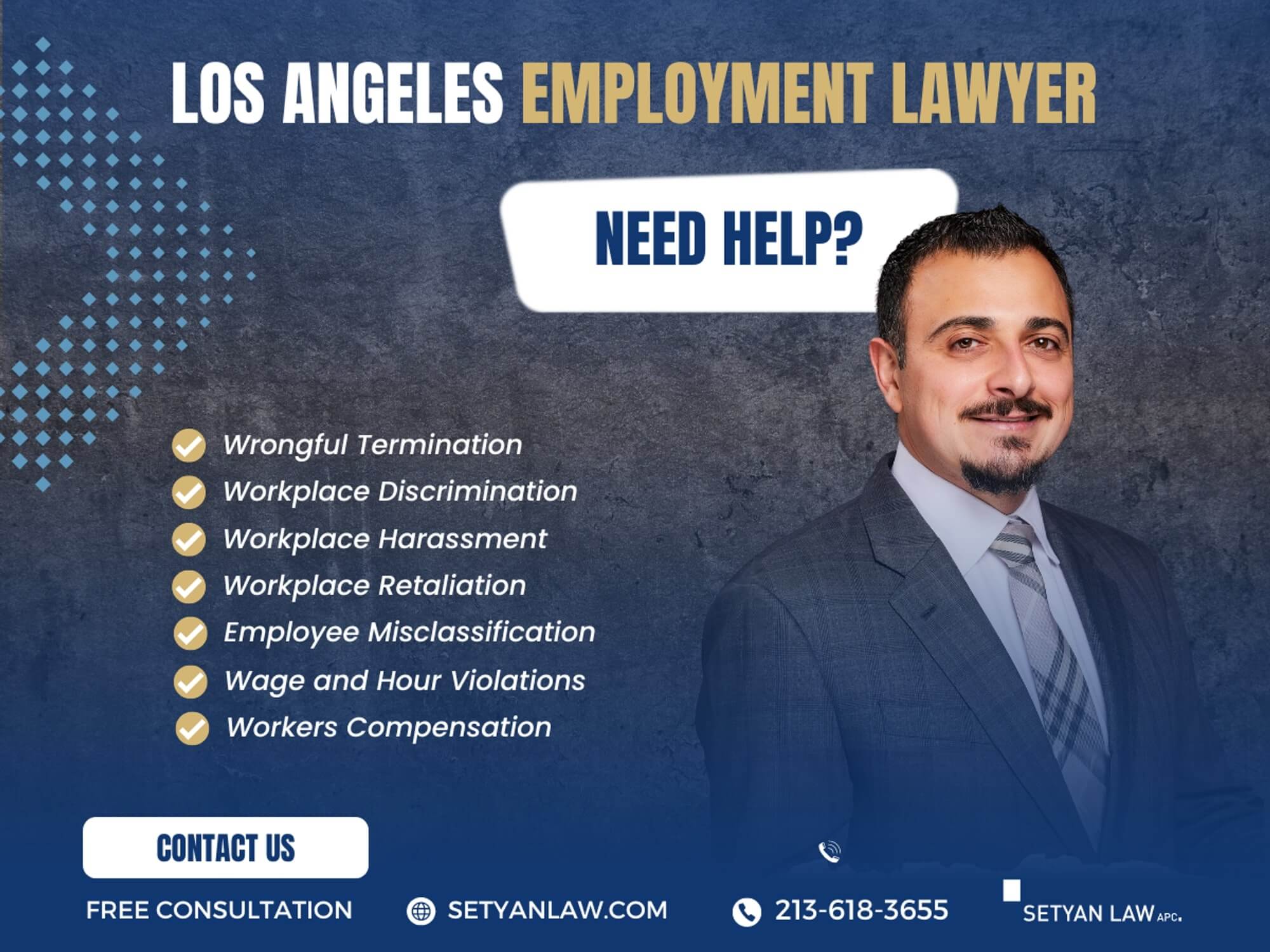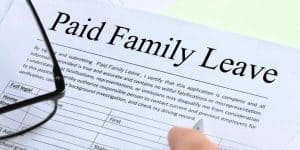Updated April 22, 2025
FMLA Meaning: Essential Guide to Family and Medical Leave Act 2025
Did you know that over 15 million American workers take FMLA leave each year to manage their health needs or care for family members?
The FMLA meaning (Family and Medical Leave Act) represents a crucial federal law that provides eligible employees with up to 12 weeks of unpaid, job-protected leave annually. While this workplace protection has been helping American workers since 1993, many employees still struggle to understand their rights under this important legislation.
This comprehensive guide explores everything you need to know about FMLA in 2025, including eligibility requirements, types of covered leave, application procedures, and your rights during and after taking leave. Whether you're planning for a new addition to your family, dealing with a serious health condition, or supporting a military family member, understanding FMLA is essential for protecting your job and benefits.
Eligibility Rules for FMLA in 2025
Not everyone who needs family or medical leave qualifies for FMLA protections. The law establishes specific eligibility criteria that employees must meet before they can access these important benefits. Understanding these requirements is essential for both employees seeking leave and employers managing workforce needs.
FMLA eligibility hinges on four fundamental requirements:
- The employee works for a covered employer
- The employee has worked for this employer for at least 12 months
- The employee has accumulated at least 1,250 hours of service during the 12 months before leave begins
- The employee works at a location where the employer has at least 50 employees within a 75-mile radius
Minimum 1,250 Work Hours and 12-Month Employment Requirement
To qualify for FMLA leave, employees must have worked for their employer for at least 12 months as of the date the leave would begin. Notably, these 12 months don't need to be consecutive. Part-time, temporary, and seasonal work all count toward this requirement [1]. Additionally, if an employee has a break in employment, the time worked prior to that break still counts as long as the break didn't exceed seven years.
The hours requirement is equally important. Employees must have worked at least 1,250 hours during the 12 months immediately preceding the start of their FMLA leave. This equates to approximately 24 hours of work per week [1]. According to FMLA regulations, only actual hours worked count toward this requirement – paid time off such as vacation, holidays, sick leave, or other forms of leave do not count [2]. For employees returning from military service under USERRA, the hours they would have worked had they not been on military duty are credited toward this requirement [1].
50-Employee Threshold Within a 75-Mile Radius
In order to qualify for FMLA leave, an employee must work at a location where the company employs at least 50 employees within a 75-mile radius. This distance is measured by surface miles, using the shortest route possible via public streets, roads, highways, and waterways [1].
The definition of "worksite" is crucial for this calculation. For most employees, the worksite is the location where they report to work or from which they receive assignments. For remote workers who work from home under telework arrangements, their worksite is the office from which they receive assignments, not their personal residence [3]. Furthermore, for employees with no fixed worksite, such as construction workers or transportation workers, the worksite is the location to which they report or from which their work is assigned [3].
Special Eligibility Rules for Airline Flight Crew Members
Recognizing the unique scheduling patterns of airline personnel, the FMLA includes modified eligibility criteria for flight crew employees. This special rule applies specifically to pilots, co-pilots, flight attendants, and flight engineers – not to other airline employees like ticket agents or baggage handlers [4].
Instead of the standard 1,250-hour requirement, airline flight crew employees must have worked or been paid for:
- At least 60% of their applicable monthly guarantee, and
- At least 504 hours during the previous 12 months [4]
The "applicable monthly guarantee" differs depending on whether the crew member is on reserve status. For those not on reserve (line holders), it refers to the minimum number of hours the employer schedules them for each month. For reserve crew members, it means the minimum number of hours the employer has agreed to pay them [5]. Personal commute time and periods of vacation, medical, or sick leave do not count toward the 504-hour requirement [4].
These special provisions, added through the Airline Flight Crew Technical Corrections Act, ensure that the unique work schedules of flight crews don't unfairly restrict their access to FMLA protections.
Types of Leave Covered Under FMLA
The Family and Medical Leave Act offers eligible workers job-protected leave for several distinct purposes. Understanding what types of leave the FMLA covers helps employees properly plan for time away from work while maintaining their job security and benefits.
Parental Leave for Birth, Adoption, or Foster Care
FMLA allows eligible employees to take up to 12 workweeks of unpaid leave for the birth of a child and to bond with the newborn within one year of birth [6]. This benefit extends to all parents regardless of gender, enabling fathers, mothers, and non-biological parents to participate in early childcare responsibilities [6].
Similarly, FMLA protects leave taken for placement of a child with the employee for adoption or foster care [6]. The entitlement to this leave expires at the end of the 12-month period beginning on the date of placement [6]. Employees may also take FMLA leave before the actual placement or adoption occurs when necessary to facilitate the process, such as:
- Attending counseling sessions
- Appearing in court
- Consulting with attorneys or doctors
- Submitting to physical examinations
- Traveling to complete an adoption [6]
Moreover, foster care under FMLA refers to 24-hour care for children away from their parents or guardians, arranged with state involvement [7]. Neither a minimum period of foster care placement nor a permanent placement is required to qualify for FMLA leave [7].
Medical Leave for Serious Health Conditions
FMLA provides protection when an employee needs leave due to their own serious health condition that renders them unable to perform essential job functions [6]. A serious health condition under FMLA includes illnesses, injuries, impairments, or physical/mental conditions involving either:
- Inpatient care (overnight stay) in a hospital, hospice, or residential medical facility [8]
- Continuing treatment by a healthcare provider [8]
Continuing treatment encompasses various scenarios, including incapacity lasting more than three consecutive days with follow-up treatment, chronic conditions requiring periodic visits, pregnancy (including severe morning sickness), permanent or long-term conditions, and conditions requiring multiple treatments [8].
Although common ailments like colds, earaches, upset stomach, and routine dental problems generally don't qualify as serious health conditions, complications from these conditions might meet FMLA criteria [8].
The same FMLA protections apply when an employee needs to care for a spouse, child, or parent with a serious health condition [6]. In this context, caring includes providing physical or psychological comfort, assistance with basic medical needs, transportation to appointments, and other supporting activities [6].
Military Caregiver and Exigency Leave Explained
FMLA offers two special provisions for military families:
Military Caregiver Leave allows eligible employees to take up to 26 workweeks of leave in a single 12-month period to care for a covered servicemember with a serious injury or illness [9]. This provision applies to:
- Current servicemembers receiving medical treatment, recuperation, or therapy for serious injuries/illnesses incurred or aggravated in the line of duty [9]
- Veterans undergoing treatment for serious service-related injuries/illnesses who were discharged within the five-year period before the employee takes leave [10]
To qualify, the employee must be the spouse, child, parent, or next of kin of the servicemember [9].
Qualifying Exigency Leave provides up to 12 workweeks of leave for certain situations arising from a family member's covered active duty or call to covered active duty status [11]. These exigencies include:
- Short-notice deployment activities
- Military events and related activities
- Childcare and school arrangements
- Financial and legal arrangements
- Counseling
- Rest and recuperation (up to 15 days)
- Post-deployment activities [12]
Consequently, through these provisions, FMLA acknowledges the unique challenges faced by military families and provides necessary workplace flexibility during deployments and recovery from service-related injuries.
Materials and Methods: How to Apply for FMLA Leave
Applying for FMLA leave requires understanding specific procedures and timelines to ensure your job protection remains intact. Properly navigating the application process helps both employees and employers manage leave efficiently while maintaining workplace operations.
30-Day Advance Notice Requirement for Foreseeable Leave
When you can anticipate the need for leave—such as for planned surgeries, childbirth, or scheduled treatments—you must notify your employer at least 30 calendar days before your leave begins [13]. Failure to provide this 30-day notice without reasonable excuse may result in your employer delaying your FMLA leave until 30 days after you eventually provide notice [14].
However, if the need for leave arises in less than 30 days, you must provide notice "as soon as practicable," which typically means either the same day or the next business day after learning of the need for leave [13]. For qualifying military exigency leave, notice must be given as soon as possible, regardless of how far in advance the leave is needed [14].
Medical Certification Requirements for Health-Related Leave
For leave related to serious health conditions, employers may request medical certification from a healthcare provider. Upon this request, you have 15 calendar days to submit the completed certification [15]. If you cannot meet this deadline despite diligent efforts, the timeframe may extend to 30 calendar days [16].
The certification must include:
- Contact information for the healthcare provider
- When the condition began and expected duration
- Appropriate medical facts supporting the need for leave
- Information on the employee's inability to work or family member's need for care
- Estimated frequency and duration for intermittent leave [17]
Notably, the certification doesn't require disclosing your specific diagnosis [16]. If the employer finds your certification incomplete, they must specify in writing what information is missing and give you seven calendar days to correct deficiencies [15].
Employer Response Timeline and Designation Process
Employers must follow specific timelines when responding to FMLA requests. Within five business days of your leave request, your employer must notify you about your FMLA eligibility [13]. Subsequently, after receiving sufficient information to determine if your leave qualifies under FMLA, they must provide a designation notice within five business days [18].
The employer's responsibilities include:
- Providing notice of eligibility and rights/responsibilities
- Requesting any necessary certification
- Notifying whether leave will be designated as FMLA-protected
- Indicating how much time will count against your FMLA entitlement [19]
Throughout this process, ongoing communication between you and your employer remains essential. Remember that while FMLA leave is unpaid, you may substitute accrued paid leave (such as sick or vacation time) if you follow your employer's normal leave policies [20].
Rights and Protections During and After FMLA Leave
Securing approved FMLA leave is only half the battle—knowing your rights during and after this period is essential for full workplace protection.
Job Restoration to Same or Equivalent Position
First and foremost, upon returning from FMLA leave, employees have the legal right to be restored to the same position they held when leave began, or to an equivalent position with equivalent benefits, pay, and working conditions [21]. The law protects this right even if the employee has been replaced or their position restructured during their absence.
An "equivalent position" must be virtually identical in terms of:
- Pay (including unconditional increases that occurred during leave)
- Benefits and working conditions
- Substantially similar duties and responsibilities
- Equivalent skill, effort, responsibility, and authority
Primarily, employees must be reinstated to the same or geographically proximate worksite without significant increase in commuting distance [22]. They're typically entitled to return to the same shift or equivalent work schedule with the same opportunities for bonuses and profit-sharing [23].
Continuation of Group Health Insurance Coverage
Throughout FMLA leave, employers must maintain employees' health coverage under any group health plan on the same terms as if they had continued working [24]. This protection applies to all benefits previously provided, including:
- Medical, surgical, and hospital care
- Dental and eye care
- Mental health counseling
- Substance abuse treatment
Essentially, if family member coverage was provided before leave, it must continue during FMLA leave [24]. Though employees may need to continue paying their portion of premiums, they cannot be required to requalify for coverage upon return [25].
Protection Against Retaliation or Interference
The FMLA straightforwardly prohibits employers from:
- Interfering with, restraining, or denying FMLA rights
- Discriminating or retaliating against employees for using FMLA leave
- Using FMLA leave as a negative factor in employment decisions [26]
In particular, employers cannot count FMLA leave in "no-fault" attendance policies, reduce work hours because of leave usage, or create intolerable conditions to force resignation [27]. Violations may result in remedies including reinstatement, back pay, restoration of benefits, and potentially emotional distress damages [2].
Limitations and Exclusions in FMLA Coverage
While most conversations about FMLA focus on what it covers, understanding what falls outside its protection is equally vital for both employers and employees.
Ineligibility for Part-Time and Short-Term Employees
FMLA coverage hinges on meeting specific work history thresholds that often exclude part-time workers. The 1,250-hour requirement (equivalent to working about 24 hours weekly) prevents many part-time employees from accessing these protections. In fact, only hours physically worked count toward this threshold—paid time off, vacation days, and sick leave are excluded from the calculation.
First-year employees face an additional barrier since FMLA requires at least 12 months of employment before eligibility begins. Hence, even full-time workers in their first year with a company cannot access FMLA protections regardless of their personal circumstances.
Exclusion of Routine Medical and Pet Care Leave
The FMLA explicitly excludes numerous common medical situations that many employees mistakenly believe qualify. Common conditions not covered include:
- Routine colds, flu, and earaches
- Upset stomach and minor ulcers
- Non-migraine headaches
- Standard dental procedures and orthodontic treatments
- Periodontal disease
Importantly, pet care remains entirely outside FMLA coverage. Regardless of how deeply pet owners consider their animals as family members, the law provides no job protection for employees who need time off to care for sick or injured pets—even in cases requiring extensive veterinary treatment.
Limitations for Highly Compensated Employees
For certain high-earning professionals, FMLA offers diminished job security through what's known as the "key employee" provision. This applies to salaried, FMLA-eligible employees who rank among the highest-paid 10 percent of all employees within 75 miles of their worksite.
Unlike standard employees, these "key employees" may be denied job restoration following leave if their employer determines that reinstatement would cause "substantial and grievous economic injury" to operations. Nevertheless, the employer must provide written notice at the time leave is requested, and the key employee retains the right to take full FMLA leave even without guaranteed reinstatement.
Furthermore, this "substantial and grievous" standard exceeds the "undue hardship" test used under the Americans with Disabilities Act, making it difficult for employers to invoke this exception successfully.
Conclusion
Understanding FMLA rights stands essential for both employees and employers navigating workplace leave situations. This federal law provides crucial job protection while allowing eligible workers to address serious health conditions, welcome new family members, or support military relatives.
Key aspects of FMLA covered throughout this guide include:
- Eligibility requirements such as 12-month employment history and 1,250 work hours
- Protected leave types ranging from parental and medical leave to military family support
- Application procedures requiring proper notice and documentation
- Job restoration rights and continued health benefits during leave
- Specific limitations affecting part-time workers and highly compensated employees
Though FMLA offers unpaid leave, these protections help millions of American workers balance their work responsibilities with critical family and medical needs. Employees should carefully review their eligibility status and maintain clear communication with employers when requesting leave. Likewise, employers benefit from establishing clear FMLA policies and procedures that comply with federal requirements while supporting their workforce effectively.
Remember that FMLA regulations continue evolving through court decisions and administrative interpretations. Staying informed about these changes helps ensure proper implementation of leave rights and responsibilities across American workplaces.
References
[1] – https://www.dol.gov/sites/dolgov/files/WHD/legacy/files/employerguide.pdf
[2] – https://www.dol.gov/sites/dolgov/files/WHD/ewep/EWEP_Initiative_Retaliation_withoutnotes.pdf
[3] – https://www.law.cornell.edu/cfr/text/29/825.111
[4] – https://www.dol.gov/agencies/whd/fact-sheets/28j-fmla-airline-crew
[5] – https://www.dol.gov/agencies/whd/fmla/2013-rule/fact-sheet/airline
[6] – https://www.dol.gov/agencies/whd/fact-sheets/28f-fmla-qualifying-reasons
[7] – https://www.dol.gov/agencies/whd/fact-sheets/28q-taking-leave-for-birth-placement-child
[8] – https://www.dol.gov/agencies/whd/fact-sheets/28p-taking-leave-when-you-or-family-has-health-condition
[9] – https://www.dol.gov/agencies/whd/fact-sheets/28ma-fmla-servicemember-caregiver
[10] – https://www.dol.gov/agencies/whd/fact-sheets/28mb-fmla-veteran-caregiver
[11] – https://www.dol.gov/agencies/whd/fact-sheets/28m-fmla-military-family
[12] – https://www.dol.gov/agencies/whd/fact-sheets/28mc-fmla-exigency-leave
[13] – https://www.dol.gov/agencies/whd/fact-sheets/28e-fmla-employee-notice
[14] – https://www.law.cornell.edu/cfr/text/29/825.302
[15] – https://webapps.dol.gov/elaws/whd/fmla/12a1.aspx
[16] – https://www.dol.gov/agencies/whd/fmla/certification-of-a-serious-health-condition
[17] – https://www.dol.gov/sites/dolgov/files/WHD/legacy/files/WH-380-E.pdf
[18] – https://www.dol.gov/agencies/whd/fact-sheets/28d-fmla-employer%20notification
[19] – https://www.dol.gov/sites/dolgov/files/WHD/legacy/files/WH-382.pdf
[20] – https://www.dol.gov/agencies/whd/fmla/faq
[21] – https://webapps.dol.gov/elaws/whd/fmla/9e1.aspx
[22] – https://www.law.cornell.edu/cfr/text/29/825.215
[23] – https://webapps.dol.gov/elaws/whd/fmla/8e2.aspx
[24] – https://www.law.cornell.edu/cfr/text/29/825.209
[25] – https://hr.nih.gov/about/faq/benefits/leave/family-medical-leave-act-fmla/will-i-lose-my-benefits-coverage-while-fmla
[26] – https://www.law.cornell.edu/cfr/text/29/825.220
[27] – https://www.dol.gov/agencies/whd/fact-sheets/77b-fmla-protections
Call Setyan Law at (213)-618-3655 to schedule a free consultation.






